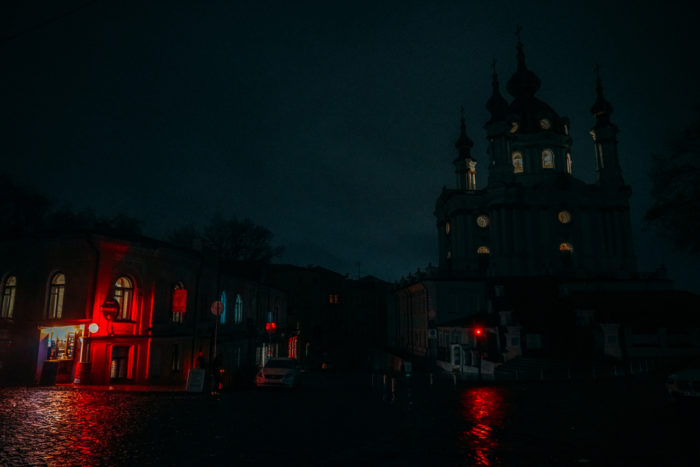Ukraine’s deputy Energy Minister Yaroslav Demchenkov recently told Liga.net how Ukraine’s western partners help the country get through the energy crisis caused by Russia’s missile strikes. We bring you the most important points.
With the support of the European Commission, a Special Fund for Energy Sector Support was established on the basis of the Secretariat of the Energy Community. From there, all funds received from countries and organizations are directed to repair and restore the Ukrainian energy sector. All procurement is conducted by the Energy Security Project of the United States Agency for International Development (USAID).
Among the main donors of the fund are the United Kingdom, Germany, Denmark, the Association of European Energy Regulators. The Czech Republic, Austria, France, and Switzerland are on the way. By the end of the year, the fund is expected to have $50 million. Given the scale of the damage, this is a small amount, but there are other instruments to help.
European Energy Community to help Ukraine sue Russia for causing energy apocalypsis
For example, the World Bank or the EBRD cannot donate to the fund. Therefore, they help in a different way: they cooperate with Ukrainian energy companies, provide them with loans and international technical assistance. Germany directs funds not only through this fund but also directly, for example, to Ukraine’s state energy company Ukrenergo. The United States provides international technical assistance to municipalities and utility companies through USAID.
Since the beginning of the war, Ukraine has received 176 cargoes of humanitarian aid from the EU and the UK. This is about 1907 tons of materials and equipment. In the coming days, Ukraine will receive significant assistance from France, Japan, the USA, and Canada.

All the Ukrainian companies had stocks of equipment. They were much larger than in EU countries. Ukraine understood that Russia would start to attack the energy infrastructure, but no one could imagine that they would do this on such a large scale. Ukraine has a great need for equipment now.
Some companies urgently need cables and oil for transformers to repair the damage. Others need transformers, fuel, supporting structures, or other specific equipment. As soon as a particular organization or country receives a list of needs of the Ukrainian energy sector, it studies the priority and its own capabilities. Not everyone can give Ukraine their equipment for free, not everyone has what it needs.
There is another problem. Ukraine inherited a strong energy system from the Soviet Union – with powerful power lines to transport electricity from nuclear power plants. With the help of our nuclear power plants, the USSR wanted to make the Warsaw Pact countries dependent on its electricity.
The EU has no such powerful power grid. Unlike Ukraine, it does not have 750 kV transformers. EU countries mainly have equipment with a capacity of 500 kV, 380-400 kV, and below. And the Russians, on the advice of their power engineers, hit, in particular, Ukraine’s powerful substations. Therefore, there are certain challenges with the search for special equipment.
European Energy Community to help Ukraine sue Russia for causing energy apocalypsis
Sometimes the question of compatibility arises. Each high-voltage equipment is manufactured for individual parameters. Buying a new transformer is different from buying shoes — there is no open market, and this is part of Russia’s plan. But Ukraine’s power engineers solve this problem by creating additional devices are created and modernizing equipment for Ukraine’s system.
Finding the equipment is half the battle; it still has to be delivered. Not all European logistics companies agree to export equipment to Ukraine. Ukrainian companies bring it, and the Energy Community helps them in some cases. The Ukrainian-German energy partnership GIZ and Go Local are also actively helping.
Ukraine has created a special hub to receive, check the working condition, and distribute the equipment. Everything is checked on the territory of the hub. Sometimes Ukraine gets used equipment, so if necessary, it is repaired, accounted for, and reported on there. Redistribution is the next stage: where, what, how much, when. For example, if 3 km of cable comes from Germany, and companies had requested half as much, it is cut and the rest is sent for storage. If the need comes, we will already have reserves.
Under the coordination of the Ministry of Energy, all energy companies – public and private – receive equipment from this hub. The type of company – DTEK, Ukrenergo, or distribution system operators – does not matter.
The equipment goes not only through this hub, but also directly from, for example, the manufacturer to the company. A lot of equipment came to Chernihiv from Germany. Equipment from Denmark is now going to Mykolaiv and Kherson, where the power grid was seriously damaged.
https://euromaidanpress.com/2022/11/22/how-i-survive-total-power-blackouts-as-a-journalist-in-odesa/








